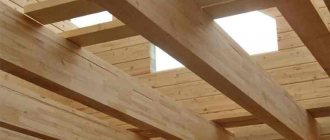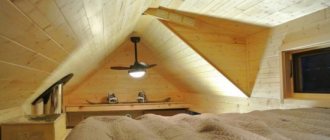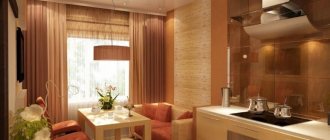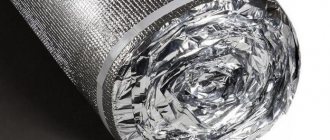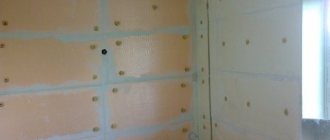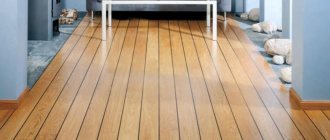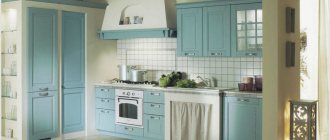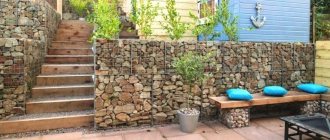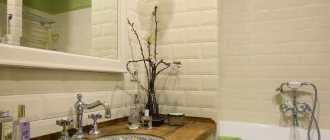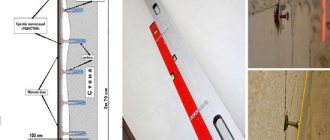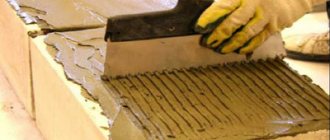The fashion for decorating walls with wood seeks to bring people closer to nature. Wood adds warmth and comfort to an apartment's decor. It is present in many interior styles, both modern and classic.
Wooden wall cladding
Wooden wall panels are widely used for interior cladding. Thanks to it, the walls become even and smooth. Also, this facing material has unsurpassed aesthetic functions. The wall does not require preliminary preparation before facing, which significantly saves time. We will discuss further what other advantages wooden panels have for interior wall decoration.
For information. Wooden panels are rectangular or square slabs made of natural wood, with the help of which partitions between rooms are sheathed.
Eco panels made of natural wood
Wooden wall panels are made from valuable wood species such as walnut, ash, and oak. They are used to cover elegant living rooms, cozy bedrooms, formal offices, laconic hallways, and if the decorative panels are carefully coated with water-repellent wax, they are used to cover walls in rooms with high humidity.
This cladding varies depending on the design:
- smooth, seamless – fits well into modern style,
- paneled - for interior decoration in eco-classic style.
Important! The great advantage of using wood in interior design is that it is environmentally friendly, which is the reason why it is the most preferred option among a large number of people. Wooden structures are known to absorb as well as store atmospheric CO2, an essential element for life on earth.
Multilayer panels
The big disadvantage of panels made from valuable wood varieties is their high cost. Under such conditions, manufacturers came up with a way out to somehow reduce the price of a popular building material. They launched the production of multilayer panels. Three-layer products are used to decorate walls inside any room of a house or apartment: bedrooms, children's rooms, kitchens. The panel consists of three panels glued together. Thanks to this, the panels are not subject to temperature factors, as well as bending and warping.
Wood cladding in the living room of a city apartment
The inner layers are made from inexpensive types of trees (spruce or pine), and the decorative front layers are made from oak, beech, walnut and other valuable wood. In this case, all three layers are glued together so that the direction of the fibers in each of them is mutually perpendicular. This eliminates the possibility of loss of strength due to exposure to humidity and temperature.
Like any other wood product, decorative wood panels require special care. The humidity level should not cross the normal limit. The wooden surface is protected by covering it with special wax or acrylic varnish.
For reference. Species such as cedar or red pine look great without a coating and do not require a protective layer.
The advantages of wood finishing materials are environmental friendliness, unique appearance, and thermal insulation.
Undoubtedly, wall decoration with wooden panels has not lost any of its popularity with the advent of new materials that require a minimum of care. On the contrary, products made from natural materials are increasingly valued. Ecological cleanliness, a unique natural look and warmth preservation come to the fore.
Decorating a balcony with wood is a way to get a warm, stylish and cozy room. At the same time, we should not forget that temperature changes are the main cause of cracks, since wood expands when heated and contracts when cold. The key to keeping wood products in perfect condition is maintaining constant temperature and humidity. Heat for wooden products is not as bad as constant temperature fluctuations: from hot to very cold and vice versa.
Types of veneer and facing plywood
Classic plywood sheet is formed by gluing together several layers of wood veneer. In this case, the direction of the fibers of each subsequent sheet of veneer should be perpendicular to the direction of the fibers of the previous one. Naturally, the level of the final product depends on the quality of the veneer and adhesive composition.
Briefly about plywood
Since we are talking about the decorative component, it should be noted that for cladding you can use sheets of at least grade 2.
In general, there are 5 of these varieties, and their quality and price are determined by the condition of the outer layers of veneer.
Sheet standards.
- The highest or grade “E”, according to GOST 3916-96, must have an absolutely clean jacket, without cracks, chips or knots. As a rule, such sheets come already sanded, and accordingly their price is the highest;
- The first grade, in appearance, differs little from the highest. The only thing allowed here is 2 – 3 small cracks, not exceeding 20 mm in length;
- The second grade, like the previous two, should not have knots. But it may already have up to 2% per 1 m² of color change and up to 5 – 7 cracks;
- In the third grade, fused knots, color changes of up to 30%, cracks, chips and small wormholes are allowed. But the number of all these defects in total should not exceed 12 pieces;
- In the fourth grade, everything is allowed except through holes and severe curvature of the sheet.
Grade.
Decorative finishing of internal surfaces, as a rule, is carried out with first-class sheets bearing the “FK” brand; they are harmless and therefore can be used in any dry rooms.
The FSF brand is allowed for exterior finishing; it is waterproof, but it contains phenol. For indoor wet rooms, the FB brand is best suited. The laminated material is designated as the “FOF” brand.
Important: to be precise, a sheet is usually called a material with a thickness of up to 12 mm. Anything thicker is referred to among professionals as a slab or plywood panel.
Decorative plywood ceiling.
What kind of veneer is there?
In order to reduce the cost of the final product, coating of various materials with natural wood veneer is now widely used. Moreover, for the production of most modern furniture sets, interior doors and other similar products, veneered MDF or chipboard panels are used.
The quality of all these panels directly depends on the type and method of production of wood veneer.
Toning of the material.
- Sawn veneer is now extremely rare; the thickness here is about 5 mm. This production method causes a high percentage of waste and is considered the most expensive. It justifies itself only in the manufacture of luxury furniture;
- In the manufacture of high-quality veneered products, sliced veneer is most often used. Its thickness varies within 3.5 mm, so such slabs imitate natural wood with 100% accuracy;
- The most common type of veneer at the moment is peeled sheet. The thickness here is 1.1–1.9 mm, due to the fact that the knife removes a thin layer of wood along the entire length of the log, which is a bit like sharpening a wooden pencil with your own hands using a stationery sharpener.
Assortment of veneer coverings.
In addition, both planed and peeled veneer used for the manufacture of decorative coatings can be of 2 types: natural and the so-called “fine line”.
Natural veneer.
- The name natural speaks for itself - it is a cut of wood in its original form. The color and texture of such veneer completely correspond to the original, and here the instructions for its production provide only protective impregnation;
- Fine-line is a product of new technologies. The basis here is also taken from a cut of natural wood, but then such veneer is subjected to complex processing. The material is pressed, tinted, painted, impregnated, and all this in order to give inexpensive wood the appearance of elite varieties or materials not found in nature at all;
Fine-line coverage.
Before installation
Brick-like wall panels for interior decoration
Using wooden panels for finishing, you can hide various defects in the walls. Installing panels is quite a serious job that requires preparation, although it cannot be called labor-intensive or expensive.
Before you start you need:
- use cement mortar to cover all cracks;
- prime the walls to prevent the appearance of mold and fungi.
Then, if desired, you can start insulating the walls, that is, filling the gap between the wall and the wooden panel with a special material (foam concrete), the house, the same balcony will become much warmer.
Preparing the walls
Installation features
Wall panels for interior decoration
First of all, you need to unpack the panels and let them get used to room humidity. To cover the walls of a wooden house indoors, you can make a frame using a special technology. In this case, the profile is attached directly to the wall surface with special dowels and threaded screws.
Installation production:
- The levelness of the walls is checked. If necessary, the walls of the room are leveled;
- The frame is mounted.
There are other ways to attach wooden panels to the wall: using glue, clips and even nails. For example, with the help of nails the outermost panel is attached to the frame, and all the others are inserted into the grooves as close as possible to each other.
Next, we will consider several possible ways to install them, each of which has its own advantages and disadvantages.
Wall assembly
Assembling panels with glue
Wall covering with wooden panels using glue is used if the walls are smooth.
Step by step assembly:
- first you need to prime the walls;
- apply the adhesive liquid to the wall unilaterally;
- using a spatula or roller, carefully squeeze the glue from the can onto the primed surface of the walls;
- The panel is installed in the provided grooves, which eliminates the need for hammering nails.
If necessary, shelves or hangers are placed on the wall, for which deep holes are drilled for screws and dowels. Well-chosen colors of the shelves may well fit into the interior of the room.
Modern method of fastening
This method is used when the wall is flat and the installation process does not require much effort:
- using a level, it is necessary to measure the placement of panels from the corner and outline the fastening points;
- install clamps according to the markings;
- arrange so that the first panel is fixed evenly;
- place the next wooden panel so that the grooves coincide with the one already installed;
- To optimize the process, it is recommended to mark lines along which the clamps can be attached.
Wood frame installation
The method works well when the walls are uneven, which does not allow the use of standard sheathing.
Self-installation of wall panels:
- First, the metal slats are fixed, and then the corner profile is installed. Corner panels are screwed to the latter with metal brackets snapped into place;
- The current method of installing the panels prevents their deformation, and, if necessary, facilitates the rapid dismantling of the entire wall. In addition, the mounting profile, despite its price, is the most reliable, durable and powerful material among all.
Next, the issues of care and use of wooden panels for interior walls will be considered.
Important! Thanks to modern processing technology, high-quality wood is highly resistant to fire and electricity, which ultimately increases the service life of wooden panels.
Where is this cladding used?
Veneered MDF and chipboard panels, as already mentioned, have found their place in the furniture industry. Modern technologies now make it possible to achieve absolute resemblance to the original array. But these products have one significant drawback: such sheets are afraid of constant exposure to moisture, especially for MDF-based products.
Plywood wooden furniture for kitchens or services is most often made on the basis of laminated “FOF” panels. They are absolutely resistant to moisture and do not lose their characteristics for decades.
Laminated sheets.
Important: laminated plywood panels are widely used in construction for the manufacture of removable formwork for pouring concrete foundations. Such a shield can withstand at least 50 cycles, although the laminating film is special.
The recently introduced sandwich panel made of plywood is now very popular. The technology itself is no longer new, but before this, such panels used plastic, metal or OSB boards.
The principle is simple - a layer of insulation is laid between two sheets, usually polystyrene foam. This design has unique thermal insulation properties.
Wall panels.
The price of a plywood sandwich panel is quite high. This is due to the fact that in such structures expensive bakelite plywood “FB” of the highest or first grade is used. Theoretically, a warm frame house can be built from such material, but due to its high cost, it is more popular as an insulating internal or external cladding.
Of course, factory-made sandwich panels are distinguished by their high quality and availability of installation connections. But our resourceful people have adapted to reduce the cost of construction by making the material with their own hands.
In essence, nothing complicated; instead of expensive polystyrene foam, simple polystyrene foam is used. And instead of first-grade “FB” plywood, the second or even third grade “FK” is used in interior spaces, and “FSF” is used for exterior cladding. It's all glued together, as a rule, with liquid nails.
Plywood sandwich panels.
How to give wood walls a fresh look
- To clean wood wall trim, simply use warm water, a soft cloth, tissue and soap. Cleaning the trim with water won't hurt, but you need to be careful to make sure the panels don't become saturated with water and become swollen. In hard-to-reach places, you can use an old toothbrush. Remove dirt from the surface using a soft cloth or paper towels until they are clean enough. Then wipe off the residual moisture with a soft cloth;
- After a good cleaning, the best way to protect the finish is to use a quality soft paste wax. Apply a thin layer to the wood as indicated in the instructions. After waiting five minutes, lightly polish with a soft cloth. Wait another 30-60 minutes and rub harder. Colorless polishing gives a very beautiful iridescent shine that will delight the eye for many months;
- Keep the tree out of the sun. The temperature of the summer sun coming through the window can be quite high. Under its influence, fine finishes are at risk of fading and destruction over time;
- There is no need to place heating units next to wooden panels. Dried and compressed wood may develop cracks. During dry months, use a humidifier to keep the humidity at 40-45 percent;
- For a quick solution to correct scratches and chips, the corresponding colors of shoe polish are used: they are carefully tinted with a felt-tip pen of the appropriate color;
- A hard, smooth, slightly yellowish layer of varnish protects the wood well from moisture and gives it a beautiful shine.
Wood panels for interior decoration
Finishing with slatted wood panels
Important! Living with wood has numerous benefits for health and well-being. Researchers have proven that living in rooms made of wooden materials creates a pleasant living environment in terms of humidity and acoustics. It also helps reduce stress levels among other benefits.
Benefits of use
Wood wall panels are considered the best for several reasons:
- Wall panels made of natural wood “breathe”, absorbing and releasing air vapor, responding to changes in the microclimate in the room. Wood fibers absorb some moisture. Humidity is one of the main characteristics of wood;
- Wooden wall panels look very beautiful. There is a phenomenon called casting, where wood fibers catch rays of light. With any movement in the room, lively changes occur on the surface of the wooden panels - some flickering magic;
- Wooden wall panels for interior decoration can be polished, and despite their fairly long service life, they can look almost like new;
- Finishing walls with wood panels with the right tools can bring genuine pleasure from working with wood.
Wood panel design
Important! Wood cladding can be made using a wide variety of wood species and come in a variety of styles. It can hide imperfections, provide a new look, or simply be installed to suit your chosen style.
It's actually nice to be in a room decorated with wood and feel its pleasant smell. The possibilities for using wood in the interior are endless. There are a lot of ideas for decorating using wooden materials.
Advantages of wall panels
Wall panels as a finishing material have the following advantages:
- It is not necessary to carefully prepare and level the wall, since the material is mainly fixed to the sheathing.
- Possibility to insulate the building and soundproof the walls of the house.
- Communications can be hidden under the panels.
- Simple installation, without labor-intensive plastering work.
- Possibility to transform the interior in a short time.
- Decorative panels go well with plaster finishes or wallpaper.
- Giving respectability to the interior.
The disadvantage of decorative panels installed on the sheathing is the reduction in usable area, which is a big drawback in small rooms.
Option for interior design with a carved panel
